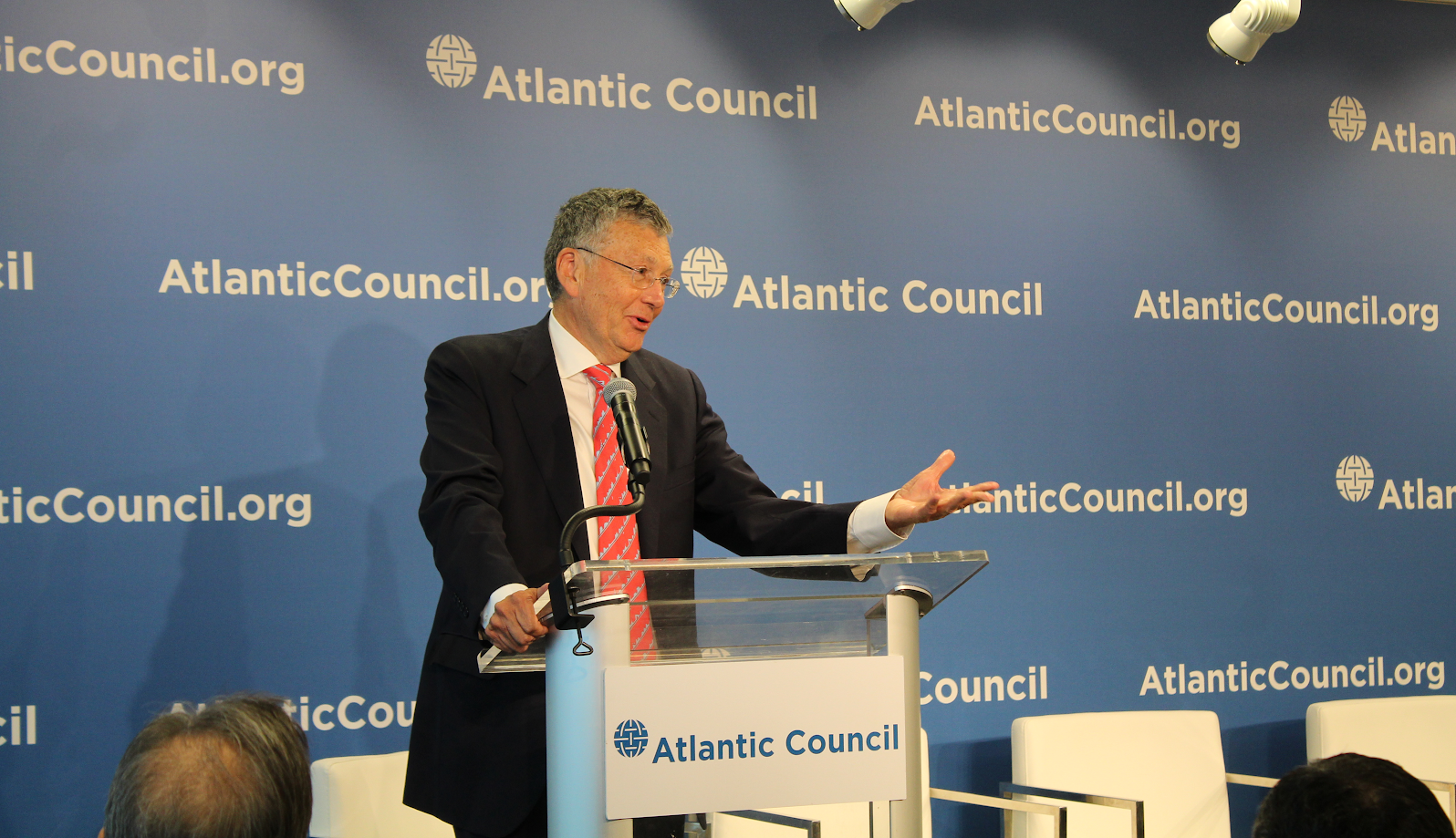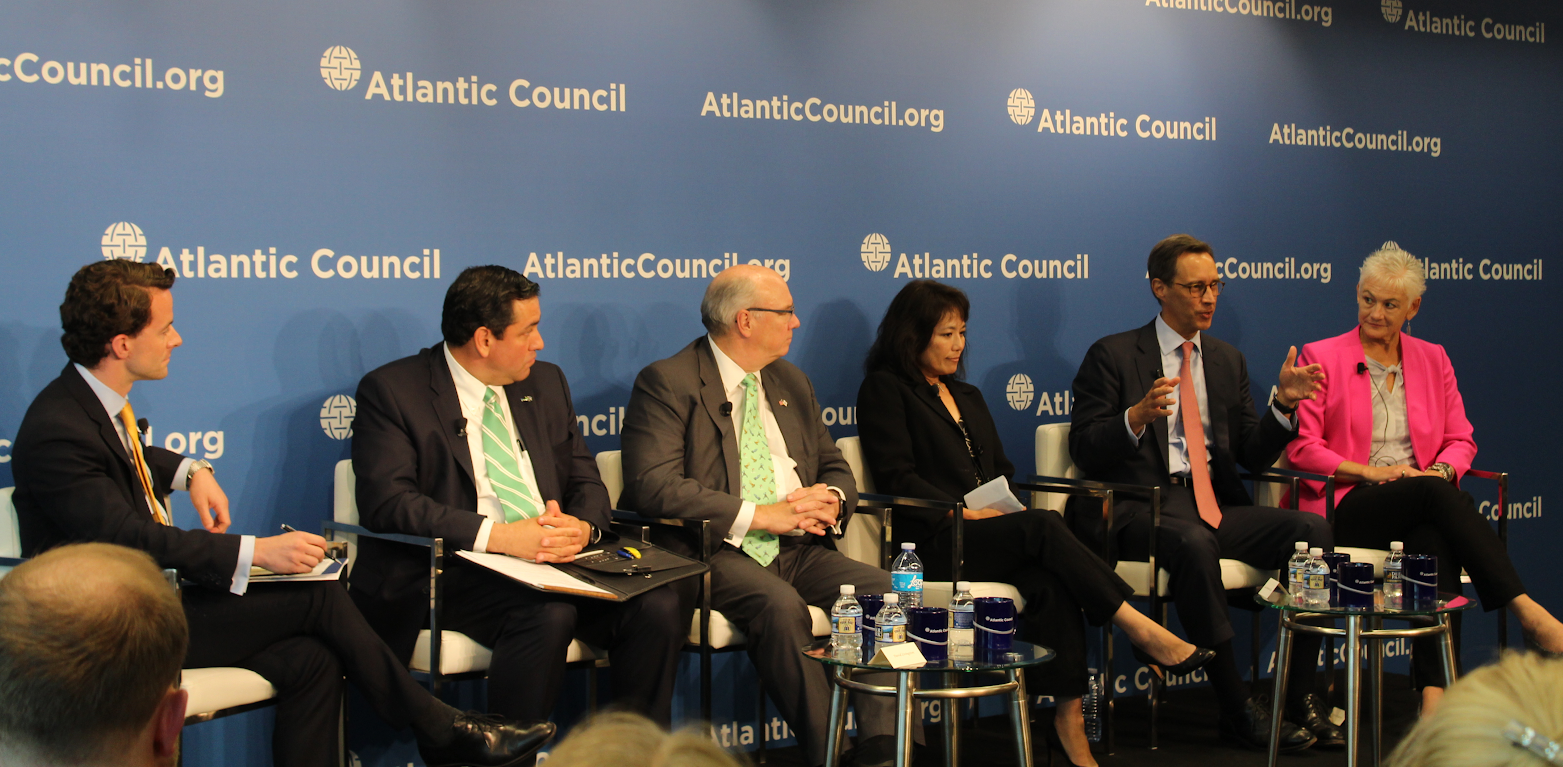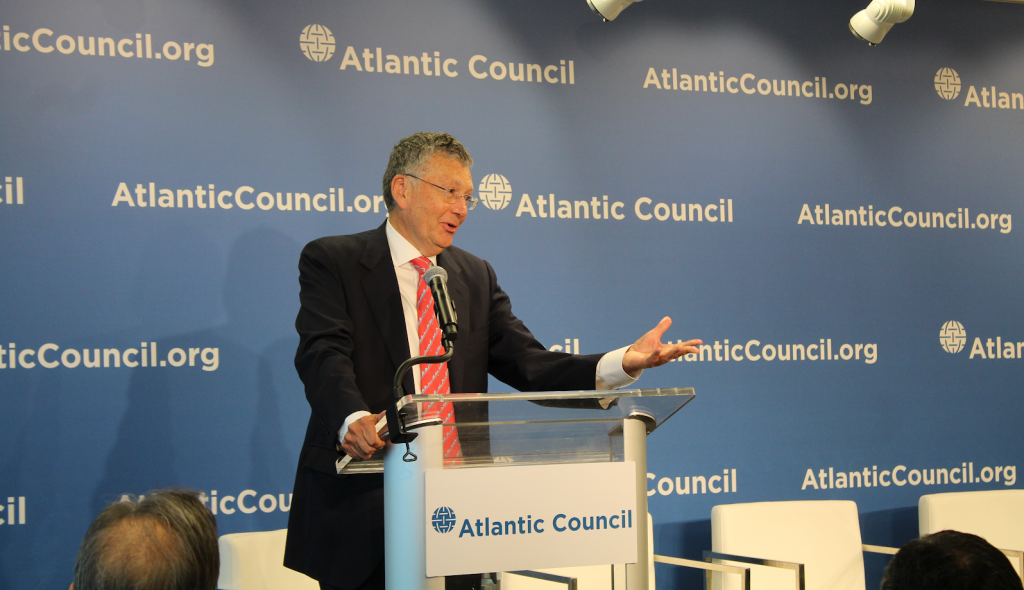
On the evening of July 10, the Atlantic Council Global Energy Center hosted a conversation on green banks, where climate finance leaders openly discussed the role of green financial institutions as tools that work to unlock investment for clean energy initiatives. Following brief welcoming remarks by David Livingston, deputy director for climate and advanced energy at the Atlantic Council Global Energy Center, Reed Hundt, chief executive officer of the Coalition for Green Capital, introduced the discussion. Hundt affirmed that vast amounts of global capital are poured into finding, shipping, and storing fossil fuels, and stressed that extreme existential consequences will result from continued carbon pollution.
He expressed that oil and gas majors leverage their hefty political weight on Capitol Hill to slow policy change. Private investment and technological innovation, however, could help catalyze the low-carbon energy transition, create new jobs, and benefit consumers. In underscoring their raison d’etre, Hundt explains that green banks play a vital role in eliminating financial barriers and de-risking investment in innovative green technologies.
Following Hundt’s introductory remarks, five panelists took the stage: Jeff Diehl, chief executive officer of Rhode Island Infrastructure Bank; Bryan Garcia, president and chief executive officer of Connecticut Green Bank; Alfred Griffin, president of New York Green Bank; Mary Templeton, president and chief executive officer of Michigan Saves; and Gwen Yamamoto Lau, executive director of Hawaii Green Infrastructure Authority.

(L to R) David Livingston, Bryan Garcia, Jeff Diehl, Gwen Yamamoto Lau, Alfred Griffin, and Mary Templeton.
To begin the discussion, the green bank representatives outlined the basic structure and priorities of their respective financial institutions. While all green financial institutions share similar goals—crowd in investment for green projects, lower the financial threshold for decarbonization, create new jobs, reduce local energy costs, and combat climate change—they all function in unique ways. Government-supported and quasi-public institutes often receive funding from public channels: cap and trade allowance proceeds from regional carbon markets and system benefit charges from local households. Conversely, green banks can be independent nonprofit entities, such as Templeton’s Michigan Saves, a grant-funded institution that works to develop a clean energy-based economy. Large commercial investors like Garcia’s Connecticut Green Bank mobilize billions of dollars to raise clean energy potential while saving taxpayers money. Furthermore, such institutions can also be public government agencies, such as Lau’s Hawaii Green Infrastructure Authority.
The concept of green banks is taking hold globally, with networks such as the Coalition for Green Capital working to connect national banks in order to share best practices and fundraising plans. Panelists also addressed British offshore wind markets, recommending the United States learn from and collaborate with UK authorities. The UK Green Investment Bank was previously a public national green bank concerned with unlocking offshore wind which, after achieving great success, ultimately transformed into the private Green Investment Group. Similar to networks of global green finance institutions, US state-level green banks also work together to achieve common goals. State banks do not see themselves as competing with the private sector; rather, they fill market gaps left open by private investors. In hypothesizing about the potential creation of a US federal green bank, panelists emphasized flexibility and state-level capital guarantees as requisites for success. Local level institutions understand the priorities and funding needs of communities on-the-ground, and as such, any US federal green bank would need to prioritize municipal and community engagement to maximize efficiency of capital.
Audience questions focused on green bank priorities and their work with nonprofits. A rise in extreme weather events, intensified by climate change, has pushed green banks to invest in both mitigation and resilience efforts. As coastal island states, Hawaii and Rhode Island face existential threats from climate-related extreme weather events; financing resilience initiatives in these states, and across the country, remains vital to their long-term development and well-being. Carbon sink initiatives such as mass reforestation programs have also benefited from renewed investor interest, offering financial actors across the economy opportunities for collaboration.
To watch the event, check out the webcast here.
Image: Reed Hundt, chief executive officer of the Coalition for Green Capital, speaking at the Atlantic Council.
